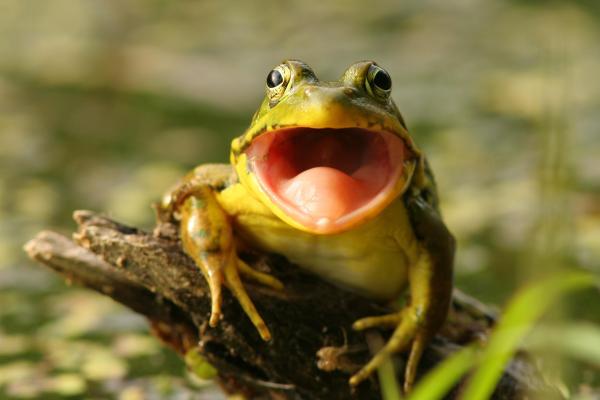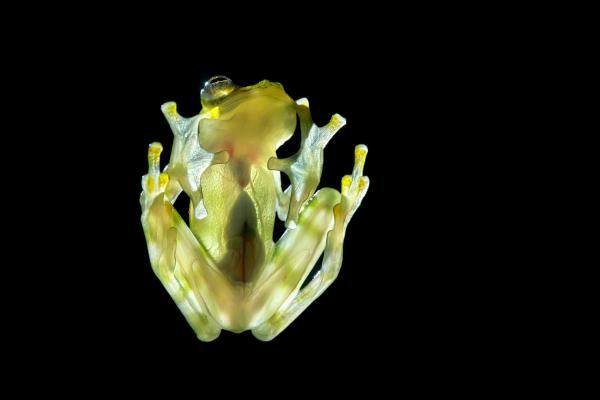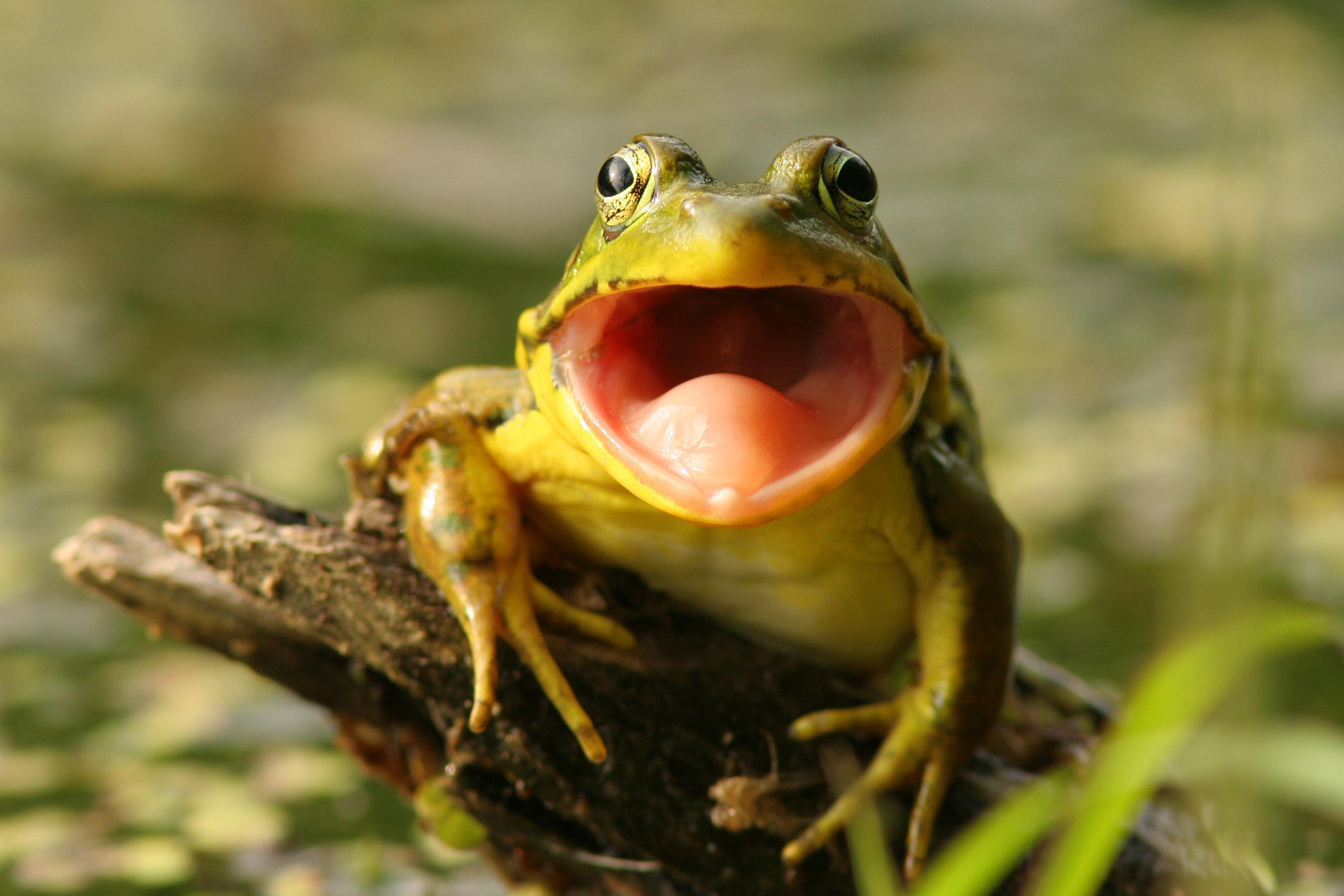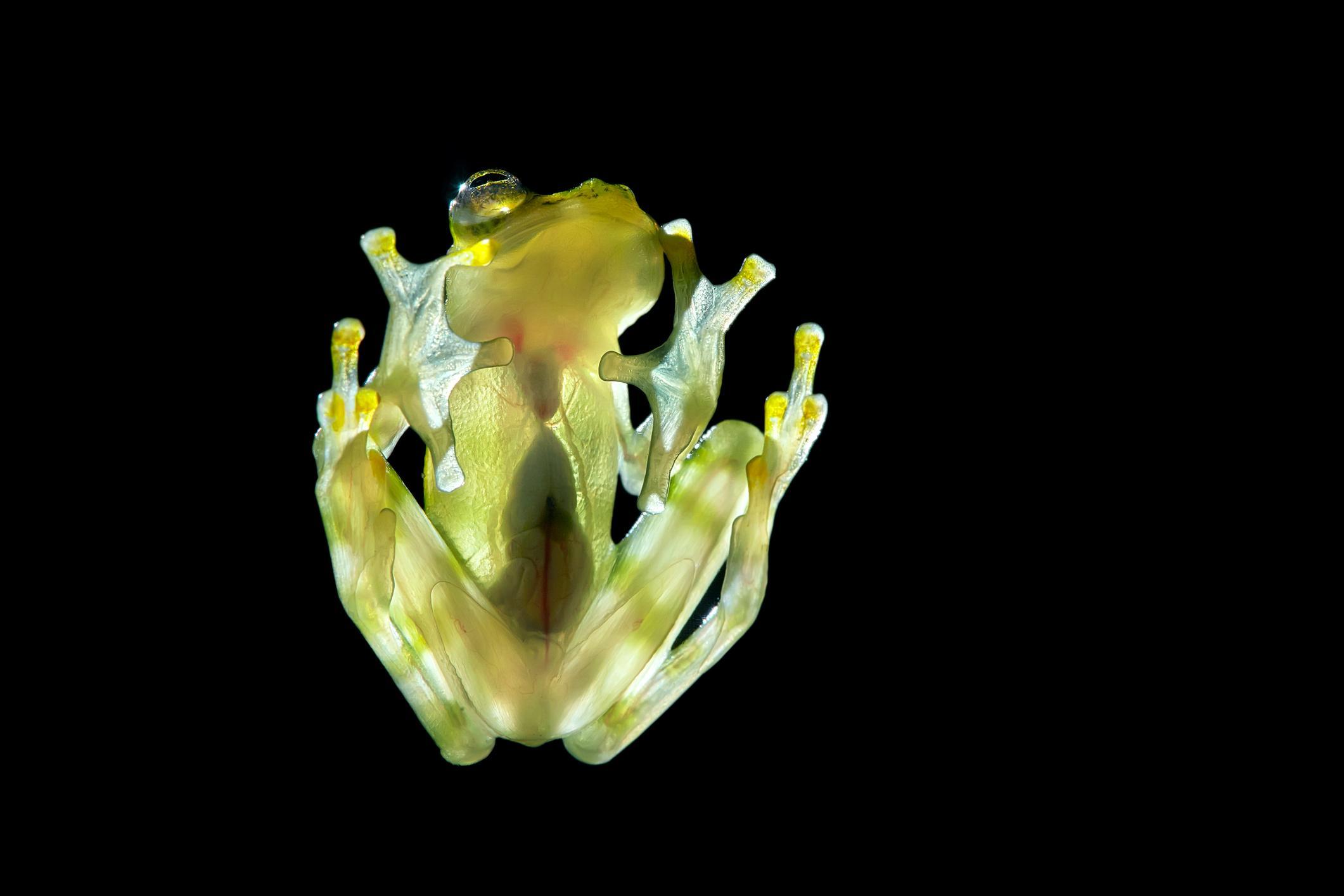Do Frogs Have Teeth?


Frogs, those intriguing amphibians sharing the Anura order with toads, are a diverse group comprising around 6,600 known species. In the world of evolution, dietary needs often shape an organism's oral structures. Frogs, too, experience a dietary transition – from plant matter as larvae to small invertebrates as adults. This intriguing shift raises a fundamental question: Do frogs have teeth?
In this article by thedailyECO, we examine whether frogs have teeth, as well as what types of teeth they have and how these dental variations relate to their diet.
Do frogs have teeth?
Yes, frogs have teeth, but their dental structure is distinct from that of many other vertebrates. Modern frogs possess what are known as "true teeth." These teeth are made up of bone structures composed of dentin and covered by enamel. However, frogs have these teeth only in their upper jaw; they are absent in their lower jaw. This unique dental arrangement is in contrast to the traditional tooth setup seen in many other animals.
It is important to note that there are cases like Guenther's marsupial frog (Gastrotheca guentheri), which defies Dollo's law of irreversibility by possessing teeth in both the upper and lower jaws.
Dollo's Law of Irreversibility, proposed by the Belgian paleontologist Louis Dollo in the late 19th century, suggests that the evolution of traits or features in organisms is generally irreversible. This principle reflects the idea that evolution is a historical process with a strong directionality, and the likelihood of reversing complex changes becomes progressively lower as time goes on.
The reason for this exceptional occurrence is not fully understood, but one possible explanation is related to the frog's diet, which includes small lizards and fellow frogs. Having a complete set of teeth could aid in immobilizing and consuming such prey.
Do toads have teeth?
Unlike frogs, toads do not possess teeth. This divergence is one of the many subtle differences between frogs and toads, which also extend to skin texture, habitat preferences, and other aspects of their anatomy and behavior.

How are the teeth of frogs?
Frog teeth serve a specific purpose of gripping rather than chewing, as most frogs feed on small invertebrates like insects, spiders, and earthworms. Their teeth are not required to be particularly strong due to their diet.
The tongue plays a significant role in their feeding process. It's glandular and produces sticky secretions that aid in capturing prey. When a frog detects movement, it rapidly extends its extensible tongue, captures the prey, holds it with its teeth, and then swallows it.
However, tooth characteristics can vary by species. Some frogs have teeth made up of different parts, while others may lack teeth entirely. Tooth size depends on diet. For instance, larger cusps might be present when frogs consume larger prey, while insect-consuming frogs often have outward-curving teeth. Frogs that include plant tissue in their diet typically have smaller, cylindrical cusps.
During the larval stage, many frogs are herbivorous and feed on algae. In this phase, they lack true teeth and instead possess horny jaws adapted for scraping algae. These variations in dental adaptations showcase the diverse ways frogs have evolved to suit their specific diets and feeding methods.
Do frogs bite?
Yes, frogs are capable of biting, but their bites are generally not harmful to humans. Frogs do not have strong jaws or sharp teeth like some other animals. Instead, their bites are more of a reflexive action when they feel threatened or cornered. If you handle a frog in a way that it perceives as a threat, it might try to bite as a defense mechanism.
Other fun facts about frogs
If you've made it this far, you've learned about frog teeth and their feeding habits. But there's more to discover about these fascinating creatures. Here are some interesting frog facts:
- Frogs come in various sizes. The tiniest frog, Paedophryne amauensis, measures only 7.7 mm, while the largest reaches up to 30 cm.
- Frogs are built for jumping, with longer hind limbs than forelegs and elongated tarsi.
- Male frogs sing nuptial songs to attract females during the breeding season.
- Unlike some other amphibians, frogs reproduce externally. Females release eggs into the water, and males release sperm, resulting in external fertilization.
- Certain frogs, like "glass frogs," have transparent bellies that reveal their internal organs, even their beating hearts.
- In the Eleutherodactylus genus, frogs skip the larval phase. Their eggs hatch into independent froglets right in the ground.
- Interestingly, frogs are absent from Antarctica, making it the only continent without these amphibians.
- Some frogs are masters of disguise. They have the ability to change their skin color to match their surroundings, helping them blend in and avoid predators.
- While many frogs have relatively short lifespans, some species can live quite long. For instance, the European common frog can live up to 10 years, and the American bullfrog can live up to 16 years.
Before you go, make sure to read this other article that explores the distinctions between frogs and toads.

If you want to read similar articles to Do Frogs Have Teeth?, we recommend you visit our Facts about animals category.
- Heying H. Anura . Available at: https://animaldiversity.org/accounts/Anura/
- Tamisiea J. 2021. This mysterious frog regrowth a complete set of teeth . Available at: https://www.nationalgeographicla.com/animales/2021/11/Esta-misteriosa-rana-volvio-a-desarrollar-una-dentadura-completa
- Zaracho VH, Céspedez JA, Alvarez BB. Diversity of reproductive modes of amphibians from Corrientes, Chaco and Formosa . Available at: https://ri.conicet.gov.ar/bitstream/handle/11336/123190/CONICET_Digital_Nro.5e621f7b-175a-495c-bc00-9658847655d1_A.pdf?sequence=2&isAllowed=y#:~:text=Entre% 20the%20amphibians%20exist%20species,also%C3%A9n%20there%20some%20species%20viv%C3%ADfor







